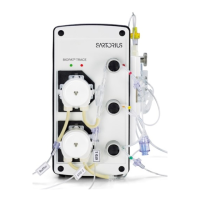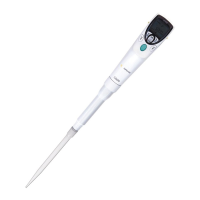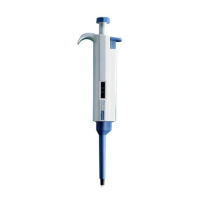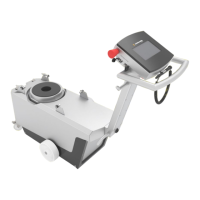BioPAT
®
Trace | Multi Trace Operating Instructions 17
BioPAT
®
Trace | Multi Trace Product Description
The BioPAT
®
Trace | Multi Trace biosensors consist of platinum thick-film
electrodes that are durably coated with the corresponding enzymes (glucose
oxidase (GOD) or lactate oxidase (LOD)). Then, enzyme and electrode are in
close proximity to each other, so that the reactions described above can be
recorded directly.
R=H Methanol
R=CH
3
Ethanol
R=H Formaldehyd
R=CH
3
Acetaldehyd
Fig. 3: Enzymatic conversion of methanol | ethanol with parallel anodic oxidation of H
2
O
2
Figure 3 shows the enzymatic conversion of methanol or ethanol to formal-
dehyde or acetaldehyde. The enzyme alcohol oxidase (AOD), which occurs in
an enzyme reactor in immobilized form, is used as catalyst. The hydrogen per-
oxide (H
2
O
2
) formed in the reaction is detected amperometrically. With this
method, the alcohol is converted in the enzyme reactor and the detection of
the formed hydrogen peroxide takes place on a platinum electrode.
3.3 Fluidic System and Sampling
To perform the respective analysis on a sample, representative material must
be transported to the biosensor. A fluidic system (tubing set) consisting of
tubing lines, pumps and valves is used for that purpose. Additionally, the
sample is also conditioned in the fluidic system, i.e. potentially interfering
components are removed, and diluted to the extent that it can be assayed
reliably by highly sensitive biosensors. This is done by separation through
adialysis membrane, which is integrated in every tubing set as a diffusion
module.

